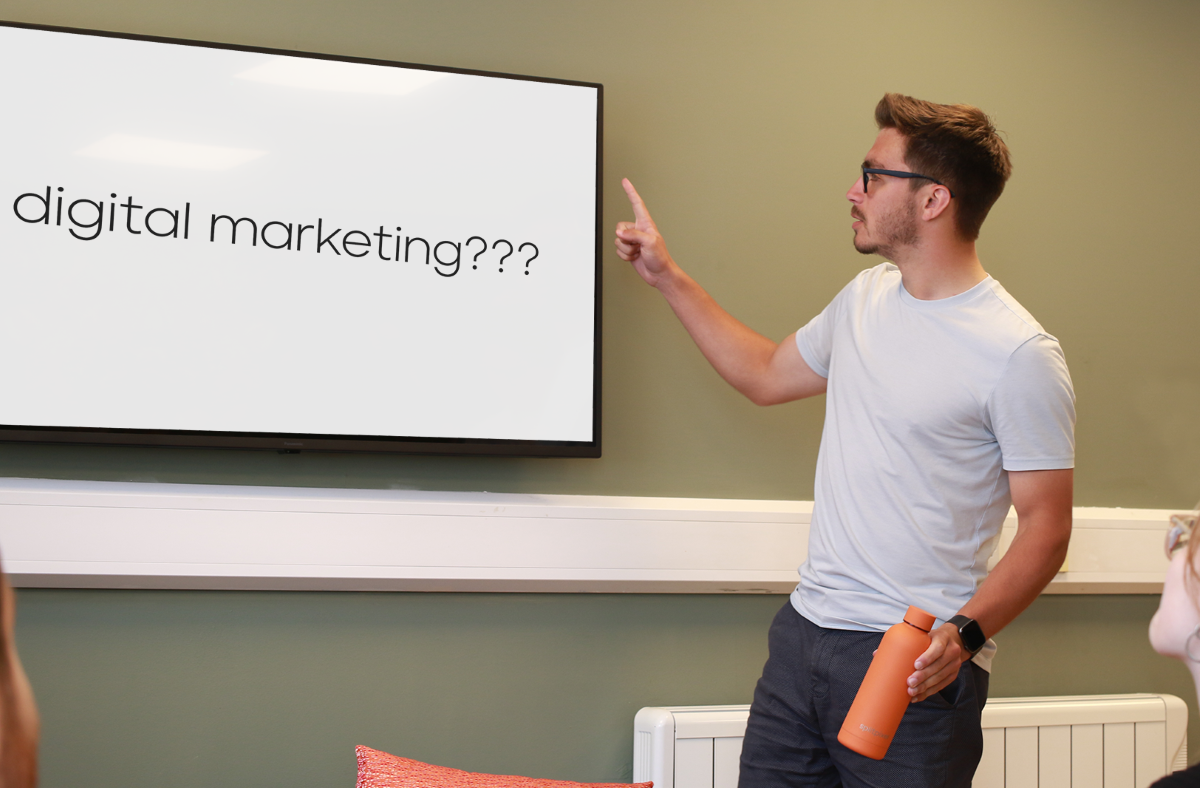
Digital marketing for arts sector beginners
Whether you’re new to digital marketing or have been bluffing your way through for a while, Lauren James has put together a beginners' guide to help you get stuck in.
If there’s one thing I’ve found working at a digital marketing agency, it’s that I’m lucky to be surrounded by experts in specific niches. I can focus on my things, and they can focus on theirs. It’s nice.
But I’m also aware that many people working in in-house roles are on their own in their marketing teams, as I used to be in a previous, pre-agency life. Maybe you can relate? Sure, you might have your niche too, but rather than focusing on that, you’ve got to cover everything, everywhere, all at once. What do you do?
I’ve spoken to a lot of people who have half of it in hand, but haven’t a clue where to start with the rest. So, this is a quick overview of the basic areas that often get neglected, and a guide to how to start tackling them – hopefully in a way that makes a difference, without overloading your already-full plate.
Organic SEO opportunities
Organic SEO is the biggest thing arts organisations neglect. Probably because you get most of your traffic from either branded search terms (on your name) or for the titles of the shows you’re hosting in the town you’re located in. You don’t often need to go looking for search traffic.
We’ve written about local SEO before so I won’t repeat that. But the next step, once you’ve got your services covered for local audiences, is to hook your site up to Google Search Console to see how those pages are doing.
Search Console is the most underrated of Google’s tools. Folks spend far too long in Analytics fretting over performance, when Search Console is what you need to isolate and fix issues.
Using Search Console, you can see which pages appear for which search terms and how they’re ranking. Using this information, you can improve your pages to target certain terms more prominently – particularly in page titles and subheadings –to help them climb up the rankings. It’s the best way to find your organic SEO quick wins and keep on top of your performance.
Simple spotlight paid campaigns
Paid advertising – whether on social media or Google Ads – is a vast ocean of stats and budgets and it can seem incredibly daunting. In terms of which platform for getting started, I’d recommend looking at Meta, which covers Facebook and Instagram.
A guide to paid ad basics would be an entire article in itself, so I won’t dwell on it too much here. There are plenty of guides out there (including on this very website). My advice, instead, looks at what to do if you’re not sure where to focus your campaign efforts and budgets.
A spotlight campaign can be really effective. It’s a simple campaign that runs one set of ads at a time so you don’t have to juggle multiple groups and budgets. The aim is to target a specific show or event you want to improve sales for.
It’s likely to be too expensive or require too much management to target everything, so focus on one at a time. Once levels are up to where you want them to be for that show, switch it.
A campaign like this is a great way to get to grips with paid ads if you’re doing it for the first time. And it can make a big impact without needing a huge amount of input.
Social media strategising
I find social media tends to be something arts organisations excel at. They do it much better than me, a 33-year-old who doesn’t understand TikTok.
So my main advice is to invest in a proper scheduling, listening and reporting tool. I know some are still logging in and posting directly to the social platform itself, which is the least efficient way to go about it.
A tool that lets you plan and schedule content across platforms – particularly one that allows you to quickly cross-post while also adjusting the post to each platform – is invaluable. So too is one that pulls all your inboxes into one place to monitor. If you’re not using one, find one.
If you’re more of a reactive poster than a strategic planner, a colleague here at Splitpixel has written a really helpful article on devising a social media strategy that may interest you.
Drawing up a strategy with broad themes and plans for what you’re going to post and when, and then scheduling that content across a longer period is a fantastic timesaver, letting you spend more time sprinkling exciting reactive posts into your feeds, while the day-to-day content rumbles on.
Go forth and… digital market
This article may seem blindingly obvious – my hope is it sparks some thoughts about how to approach something you might not be familiar. When trying to bluff your way through an area of digital you don’t know much about, it’s best to start with something small, but which makes a noticeable difference. Hopefully these tips will help. Good luck!
Lauren James is Head of Content and Web Projects at Splitpixel.
![]() https://www.splitpixel.co.uk/
https://www.splitpixel.co.uk/
![]() @splitpixel
@splitpixel
This article is part of a series contributed by Splitpixel to share expertise on how to best apply accessibility and inclusivity principles in digital spaces.
Join the Discussion
You must be logged in to post a comment.